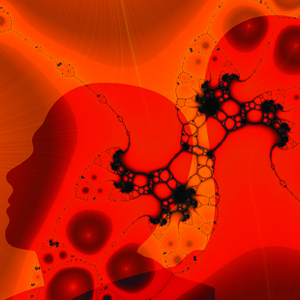Hormones on Our Minds and Nerves
 Some say that, without sufficient evidence to the contrary, all estrogens are alike and all progesterone/progestins are alike. Even basic science courses, going back decades, teach that miniscule differences in shape and size between molecules can have significant differences in their effects on the body. However, the Kronos Early Estrogen Prevention Study (KEEPS) suggested that perhaps all estrogens are NOT alike.
Some say that, without sufficient evidence to the contrary, all estrogens are alike and all progesterone/progestins are alike. Even basic science courses, going back decades, teach that miniscule differences in shape and size between molecules can have significant differences in their effects on the body. However, the Kronos Early Estrogen Prevention Study (KEEPS) suggested that perhaps all estrogens are NOT alike.
One of the most enduring opinions has been that women without a uterus do not need progesterone. The idea is that the hormone progesterone has a single function, which is to slough off accumulated tissue in the uterus and in doing so, preventing uterine cancer, and that it has no other effects on the body. In a perverse way, this pronouncement has saved numerous women from the effects of progestins (altered progesterone molecules) such as medroxyprogesterone, which was linked in the Women’s Health Initiative Study with an increase in breast cancer risk.
This type of limited thinking perseveres, potentially leading to serious deficits in medical care. Over 40 years ago, Dr. Katharina Dalton wrote that women without a uterus most likely had surgery to remove their uterus because of a long-standing deficit of progesterone, and actually needed much more progesterone than women reaching a natural menopause.
One area of research that is currently opening minds to the potential of hormones focuses on “neurosteroids,” which are hormones produced by nerve cells in the brain, spinal cord and peripheral nervous system, independently of hormone production elsewhere in the body. In essence, this research indicates that the “sex” hormones we commonly identify as being produced by the ovaries, testes, and adrenal glands (such as the estrogens, progesterone and its derivatives, DHEA, testosterone, pregnenolone, and others) are so important to neural function that they are also independently produced by neural tissue.
The neural tissue responds to the hormones circulating in the blood stream and to the neurosteroids (i.e., the hormones produced locally by the nerves themselves). The local neurosteroid production allows for higher concentrations of hormones when and where they are needed, and these concentrations can be 20 to 50 times the level circulating in the blood stream. Different areas of the brain, or different nerve cells, may produce or concentrate different hormones. Some hormones may also trigger opposing activities, depending on their concentrations.
The interplay of neurosteroids is extremely complicated, and the science is just getting started. What is equally exciting is that our minds are being opened to the possibilities that the so-called “sex” hormones might now also prove useful for treating neurodegenerative diseases!
Steroidal hormones are believed to help heal damaged neural tissue. For example, in the disease ALS (amyotrophic lateral sclerosis), it has been hypothesized that motor neurons may be affected by a deficiency of receptors for testosterone. Estrogens can make it worse by causing neuronal excitement. Progesterone may help repair the neurons by repairing the myelin sheath that protects them. Notably, patients with ALS typically have low progesterone levels.
With Alzheimer’s disease, changes occur in brain cells that can be linked to hormone levels, according to Dr. Ray Peat. Of prime importance is the ability of the mitochondria (i.e., the part of a cell responsible for energy production) to use oxygen. The enzyme needed for oxygen uptake is dependent upon sufficient thyroid hormones, and antagonized by the presence of estrogen, iron and toxins. A low progesterone level, relative to estrogen, results in increased levels of LH and FSH (pituitary hormones associated with menopause, when elevated). Both LH and FSH are themselves very inflammatory, and may be balanced by DHEA and testosterone, and even more so by progesterone.
Dr. Dalton found that progesterone helped women eliminate premenstrual epileptic seizures. Neurosteroid scientists have demonstrated the effectiveness of both progesterone and its metabolite allopregnanolone in preventing convulsions.
As this research continues, we may discover that vision and hearing could be improved by ensuring the healthy functioning of the nerves involved. Cognition, memory, and mood may be improved with a healthy nervous system. Mental diseases, such as schizophrenia, may be curtailed with neurosteroid hormones. And we may find that one of the brightest neurosteroid stars, progesterone, is not just for the uterus.




